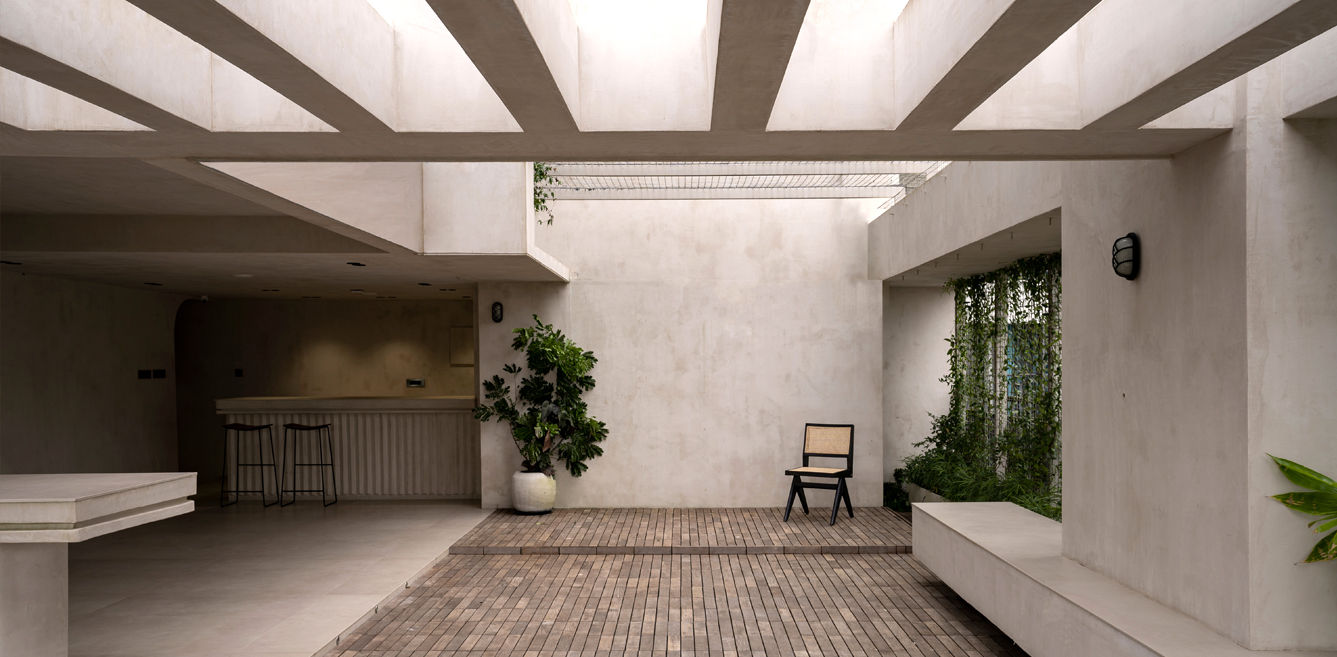

In an interconnected world, where cultural exchange is rapid and widespread, awareness of global design trends is paramount. Designers draw inspiration from diverse cultural influences, creating products that resonate not only within local contexts but also on a global scale. As we prepare to bid farewell to another rollercoaster year 2023, we can’t help but look ahead and marvel at what’s about to come, prompting us all to cast our eyes forward with excitement for what lies ahead. In conversation with Co founders of Humming Tree Arun Shekar Gowda & Mohammed Afnan, we discover what lies ahead. Read on to find out!
What do you see as the most significant upcoming trends in architecture and interior design?
The upcoming trendsetter would be moody interiors, characterized by darker hues, luxurious textures, and ambient lighting for a sophisticated atmosphere. On the technological front, the focus is on visible hygiene; involving the integration of touchless controls, automatic sensors, and smart fixtures in bathrooms.
Are there any emerging design styles or movements that you find particularly interesting?
It’s not just me; many find the potential takeover by AI in design quite fascinating. The challenge lies in finding a harmonious balance between AI and human creativity. Exploring how the strengths of both can be combined to achieve the best outcomes could be one such aspect of it.
What eco-friendly materials and practices are becoming more popular?
Sourcing materials locally within a range of 250-400 km is a practice we have been and trying to incorporate since . The benefits of these are multi-fold in terms of being eco-conscious.
How is technology shaping the future of architecture and interior design?
Advanced materials, AI, and digital fabrication are transforming the design process, influencing both aesthetics and functionality. Innovations like AR and VR enable clients and stakeholders to preview spaces before construction, enhancing visualization and decision-making.So most definitely, technological advancements have significantly improved time management and efficiency in the design field I’d say.
Are there any specific software or tools that are revolutionizing the design process?
Currently, our team favorite is this software called D5 for renders, gets the job done in time with required efficiency. And another one would be this online platform for mood board called Milanote, definitely makes it easier for us to collaborate with the clients on design ideation, but whatever may come nothing greater than the age old method of referring books and making cut outs from your favorite magazine.
How are spaces being optimized for functionality and versatility?
So many ways in which I think this can be incorporated into design, flexible layouts, modular furniture, smart technology, sustainable practices, inclusive design, adaptive architecture, user-centered approaches, biophilic design, collaborative spaces are all good examples.
What color palettes and combinations do you anticipate being popular in the coming years?
Anything and everything organic, meaning hues that can effortlessly harmonize with the natural world, seamlessly blending with the elements of nature is something we are very much looking forward to.
How are inclusivity and accessibility being integrated into designs?
In our field of design, inclusivity and accessibility can be integrated from very basic design features like ramps, wider doorways, adaptable spaces to collaboration with accessibility experts, ensuring spaces are welcoming and usable for all individuals, regardless of abilities.
How are client preferences changing in terms of design styles, colors, and themes?
Recently I have had opportunities working with clients who are well travelled, open to experiment.. people who are very sensitive towards materials and as well as very much into the details than just the overarching theme.
How are professionals addressing the need for sustainable, functional, and aesthetically pleasing designs simultaneously?
Balancing sustainability and aesthetics is no walk in the park, but it’s a crucial commitment I believe. The key lies in seamlessly integrating sustainability into aesthetics, whether through materials or the manufacturing process. Likewise, functionality starts from the very beginning of planning.
Can you highlight a recent project that exemplifies current industry trends?
As designers we have always invited experimentation. Some are treated as reverent studies dedicated to design, others as laid-back, lounge-y spaces for experiences. For this 4000 sq.ft Bangalore home, we drew references from client’s nostalgic experiences and colors that aimed to combine the two, creating a cozy and intimate space that nods to the glamor of this sanctuary.
Each area signifies a different meaning for everyone—even more reason to let it stand out as a moody statement space. This home commodious sitting room peppered with artwork and vintage decor, lush shades of deep blue walls, greens, abstract furniture’s, and art that instantly turn the space into a cocoon.
Just a few months ago, fashion's darling was emerald green. You would have seen it…
The art world is having a moment. From the packed gallery weekends in Mumbai to…
“Hair is everything. We wish it wasn’t, so we could actually think about something else…
For most people, Coachella is about the music. Or the outfits. Or seeing someone faint…
In the middle of Mumbai's bustling cityscape, Sakura Home emerges as a contrast to chaos.…
“The 24-foot wall of Tree of Life Chintz artwork in the double-height living area is…